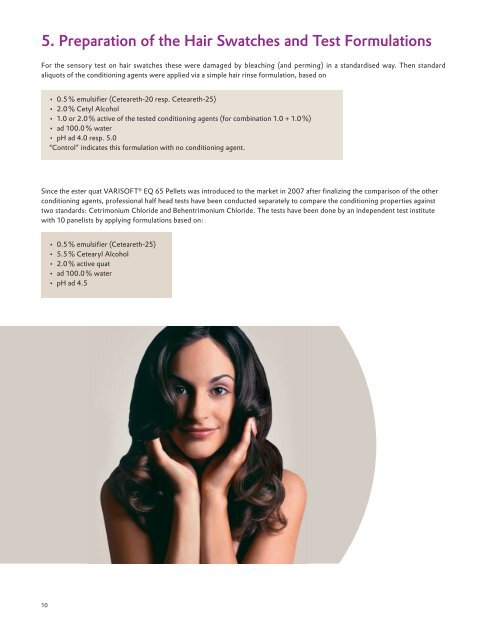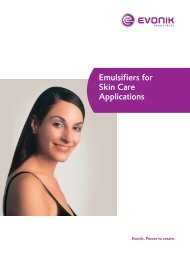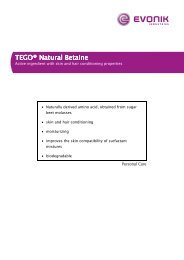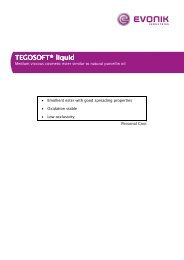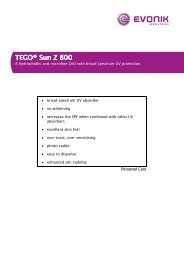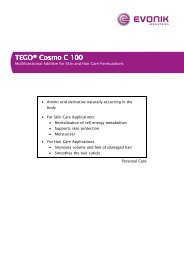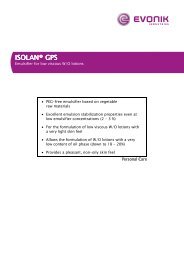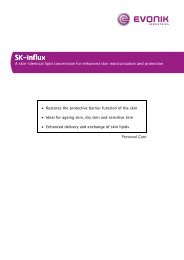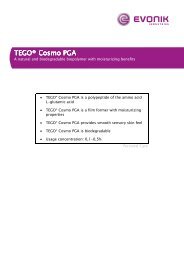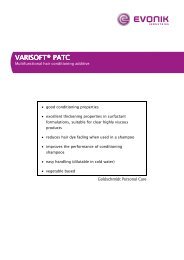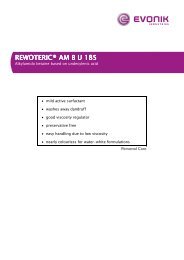Hair Types and Required Specific Ingredients for Conditioning ...
Hair Types and Required Specific Ingredients for Conditioning ...
Hair Types and Required Specific Ingredients for Conditioning ...
You also want an ePaper? Increase the reach of your titles
YUMPU automatically turns print PDFs into web optimized ePapers that Google loves.
5. Preparation of the <strong>Hair</strong> Swatches <strong>and</strong> Test Formulations<br />
For the sensory test on hair swatches these were damaged by bleaching (<strong>and</strong> perming) in a st<strong>and</strong>ardised way. Then st<strong>and</strong>ard<br />
aliquots of the conditioning agents were applied via a simple hair rinse <strong>for</strong>mulation, based on<br />
• 0.5 % emulsifier (Ceteareth-20 resp. Ceteareth-25)<br />
• 2.0 % Cetyl Alcohol<br />
• 1.0 or 2.0 % active of the tested conditioning agents (<strong>for</strong> combination 1.0 + 1.0 %)<br />
• ad 100.0 % water<br />
• pH ad 4.0 resp. 5.0<br />
“Control” indicates this <strong>for</strong>mulation with no conditioning agent.<br />
Since the ester quat VARISOFT ® EQ 65 Pellets was introduced to the market in 2007 after finalizing the comparison of the other<br />
conditioning agents, professional half head tests have been conducted separately to compare the conditioning properties against<br />
two st<strong>and</strong>ards: Cetrimonium Chloride <strong>and</strong> Behentrimonium Chloride. The tests have been done by an independent test institute<br />
with 10 panelists by applying <strong>for</strong>mulations based on:<br />
• 0.5 % emulsifier (Ceteareth-25)<br />
• 5.5 % Cetearyl Alcohol<br />
• 2.0 % active quat<br />
• ad 100.0 % water<br />
• pH ad 4.5<br />
10


